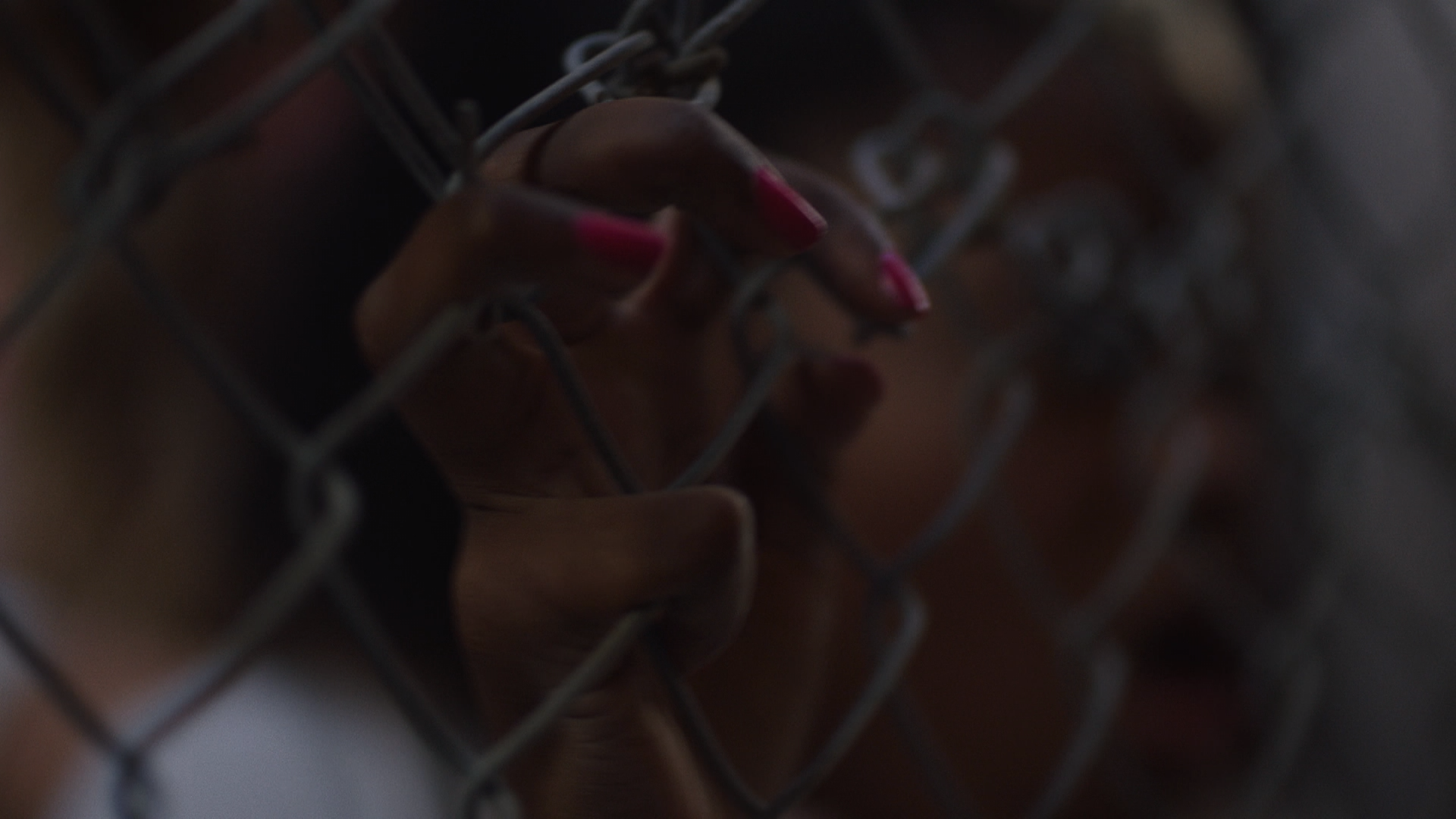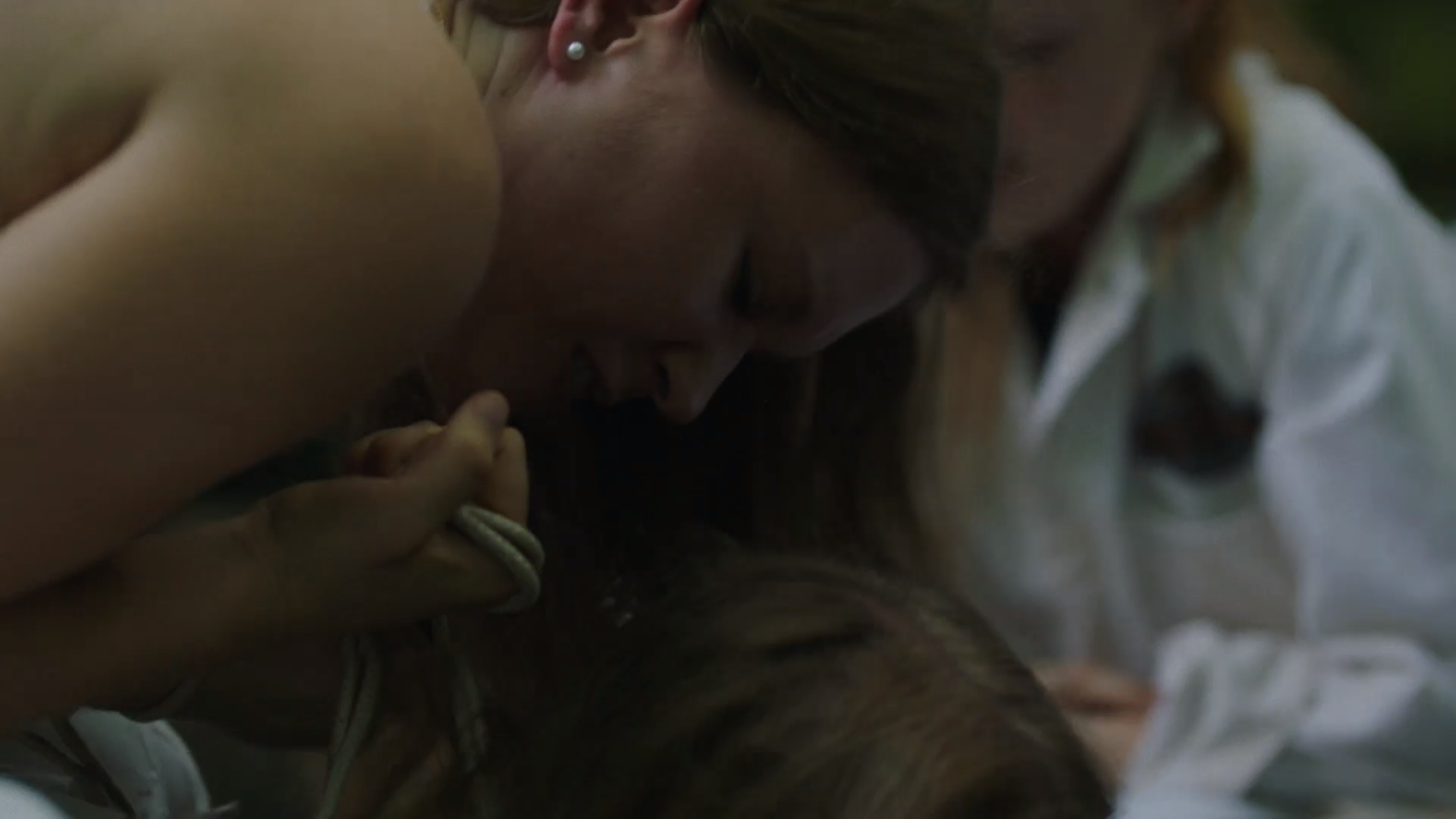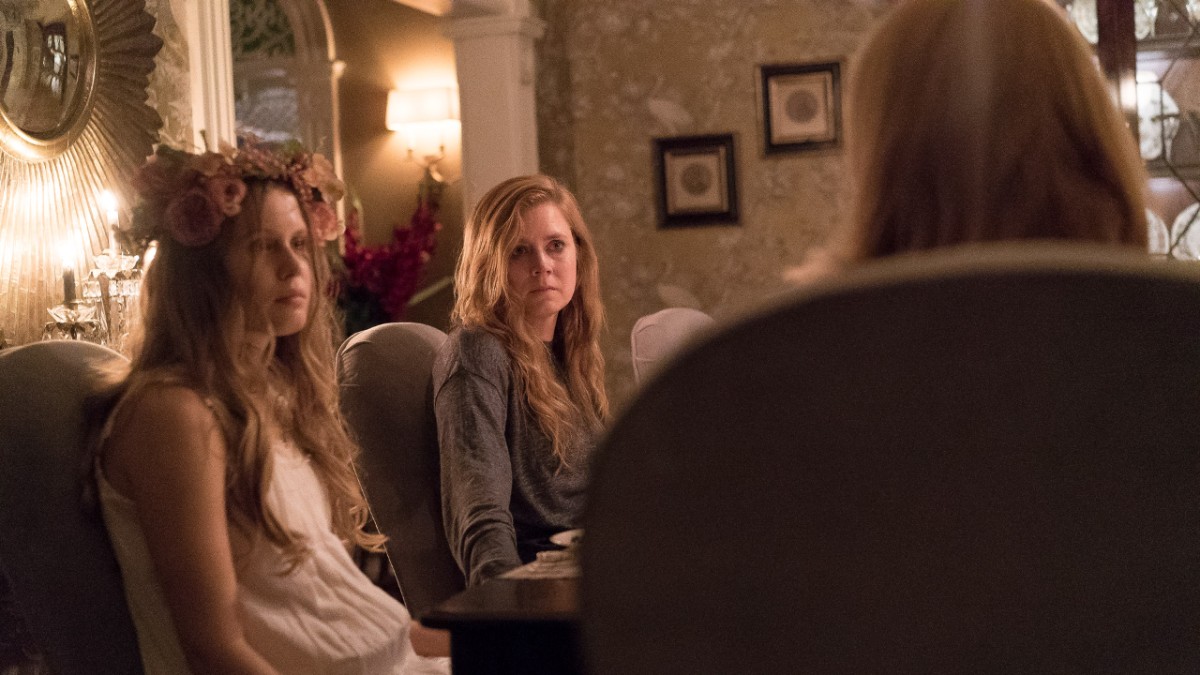Dissecting the grisly final credits of 'Sharp Objects'
Spoilers for Episode 8 of Sharp Objects follow.
It had to happen at some point. For as much as I enjoyed Sharp Objects’ overt visual symbolism, brooding atmosphere, and fascinating female characters, I also recognised that for most these aspects probably weren't the hook - the ‘whodunit’ mystery was. Given the show’s faithfulness to its source material and that only a few films get away with leaving their murder unsolved, it was unlikely there would be any drastic changes from the rushed final pages of the book (not that I exactly wanted that, either). But, given the strength of series director Jean-Marc Vallée’s finale for Big Little Lies, I had hope there would be something ‘more’, something unexpected, at least stylistically.
Perhaps I was too optimistic.
To be blunt, I was disappointed with the big reveal of Amma as the killer, especially the final line. Repetition is an obvious trademark of the series, but here the use of Amma’s catchphrase and cut to Led Zeppelin felt near laughable (its apt that Vallée describes the moment as a “punch line”). Topping off a disappointingly conventional episode (at least by Sharp Objects standards) with a shock-value one-liner felt almost like a betrayal to the show’s previous insistence on a proding pace and layered characterisation.

That was, until the credits.
Varying episode lengths, sudden end cards, and different opening music each week (kind of) - it seemed the end credits were the only facet of the standard TV format left untouched by Sharp Objects’ defiant subversion. In fact, I didn’t even watch them this week until I saw buzz on Twitter, but boy am I glad I did. Not only does it absolve most of my disappointment with the series’ final line, but it’s yet another example of what the show does best - examining female rage and identity through visuals alone.
Buried just deep enough into the credits that there’s a false sense of security, everything changes once the ever-relevant words “I need your love” are uttered. The familiar rolling of names and Zepplin score fade out, revealing bright pink painted nails clawing out of a shaking chain-link fence. Given everything we know of both Natalie’s death (her nails were painted before she died) and Wind Gap’s traditional gender norms, it’s a fitting opening shot for the shockingly explicit sequence to follow.

The flashes of violence are so frantic and disorienting it’s difficult to catch much of anything, let alone everything, on first watch. On a narrative level, there’s plenty of answers for those left with questions about the specifics of the murders (like why Natalie’s blood was found under John Keene’s bed). But as I was watching these monstrous acts being carried out by a gang of barely-teenage girls, it became even more apparent just how far Sharp Objects pushes the envelope for both the Dead Girl genre and representations of women on screen as a whole.
Even previous to tonight’s episode, Sharp Objects was never afraid of disputing the assumption that only men are capable of such violence. Camille’s belief in James’ testimony of a “woman in white” (more on that later) and Jodes’ comment that it’s “sexist” to assume the murderer is male suggest the women of Wind Gap are far more perceptive of the anger and dangerous capabilities of women than their male counterparts. Across fictional and true crime media, the trope of the husband [or another male figure] “did it” is well-worn (author Gillian Flynn even satirised this with her other bestseller, Gone Girl). But in Sharp Objects, women occupy every role, not just the one being murdered. Yes, they are the victim (Natalie, Ann and Mae). But they are also the detective (Camille and Marion’s nurse), the active accomplice (Amma’s friends), the passive enabler (Jackie), and, significantly, the murderer (Adora and Amma).

In fact, aside from the Calhoun Day punch-up, every instance of on-screen violence sees women as both the punisher and punished (oftentimes the two being the same). It’s a radical shift in how we are used to women being portrayed in mainstream crime fiction, where violence is often only in self-defence. Allowing women to be as unapologetically evil and morally-bankrupt as the Walter Whites and Frank Underwoods of modern premium television is not negative or misogynistic. In fact, to confine women to heroic and redemptive characters would arguably be just as sexist and shallow as restricting them to the traditionally feminine image endorsed by the likes of Wind Gap.
The quick barrage of terror ends on Amma finishing off her latest prey with rope and baring her teeth like a wild animal, her expression filled with release, triumph, domination, and rage (and not the “very female sort of rage” of “killing with kindness” Adora’s prosecution argues). It’s the furthest one could get from the weak, infantilised young girl seen earlier and serves as a powerful contrast to the haunting image that concludes the series.

Image source: Vanity Fair
With just a few seconds of Amma as the “woman in white”, all the fragments of her many identities finally settle together in one unnerving, impactful shot. The very notion of a woman in white itself reveals much about how Amma projects herself to different audiences. For Amma and the teenagers she manipulates, she is a figure that is both dangerous yet alluring. For Camille, a woman in white is a reminder of two possible outcomes that could have befallen her had she taken her mother’s ‘care’ - the literal ghost of a dead girl, or just another generational cycle of violence. For citizens of Wind Gap, the commonsense associations of ‘purity’ and ‘innocence’ with the colour white are most apparent, further playing into Amma and Adora’s facades and the notion that women are not capable of evil.
But most chilling, it shows Amma’s perception of herself as not just a goddess worthy of worship, but specifically the goddess Persephone, the queen of the Underworld. The tale of Persephone, who spends her time split between the the worlds of the living (with her controlling mother) and the dead, has obvious correlations to Amma’s double-life. But more so it emphasises the continuity of violence between Adora and Amma, whose likeness is already apparent through the mirroring of framing and costuming. According to Jung and Kerenyi, the Persephone myth suggests “that every woman extends backwards into her mother and forwards into her daughter”, a running theme of the show. (It should be noted that the context of Jung and Kerenyi’s quote relates more to the cyclical nature of maiden-mother identities as opposed to violence and abuse, but nonetheless feels relevant.)

Image source: HBO
Amma as Phespherone is not an original idea - she declares it herself during the opening dinner scene, adorned in a white robe and floral wreath reminiscent of Simone Pignoni’s painting of the goddess’ Roman equivalent. But by reusing this earlier mythological imagery as the final note of the series, Sharp Objects leaves us with something of a tragedy - a girl so molded by her mother’s abusive expression of love that she feels “punishment” is her duty and the only way to achieve affection.
On the decision to include mid and post-credits scenes, showrunner Marti Noxon and Flynn explained they felt it was owed to mystery fans a sense of satisfaction. It's likely they were referring to the blood-lust and explicit answers audiences crave when it comes to crime media. But for myself, the sense of closure it offered wasn’t based entirely in its explicit violence. Instead, it felt like a fitting culmination of everything Sharp Objects, and by extension Flynn’s entire oeuvre, excels in - turning the preconceptions of women as heavenly creatures into twisted folk tales where even girls can be the devil in disguise.
Post a comment